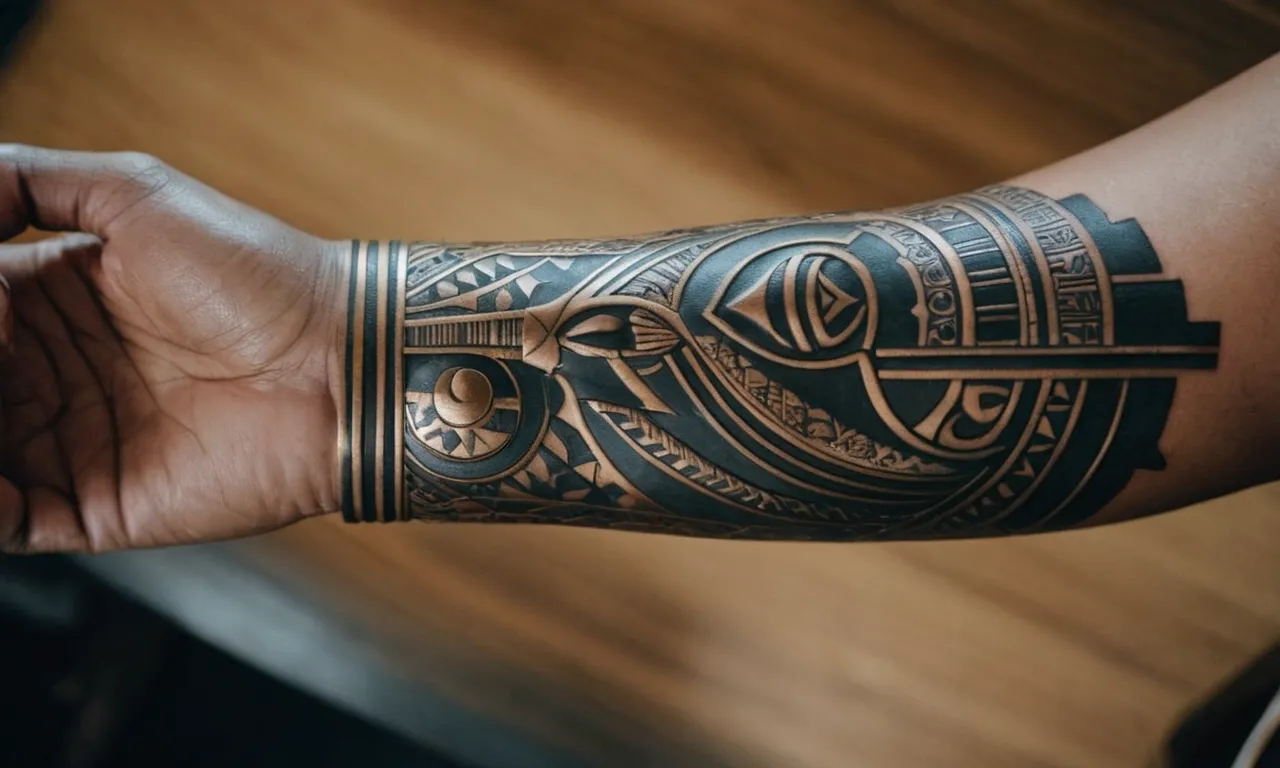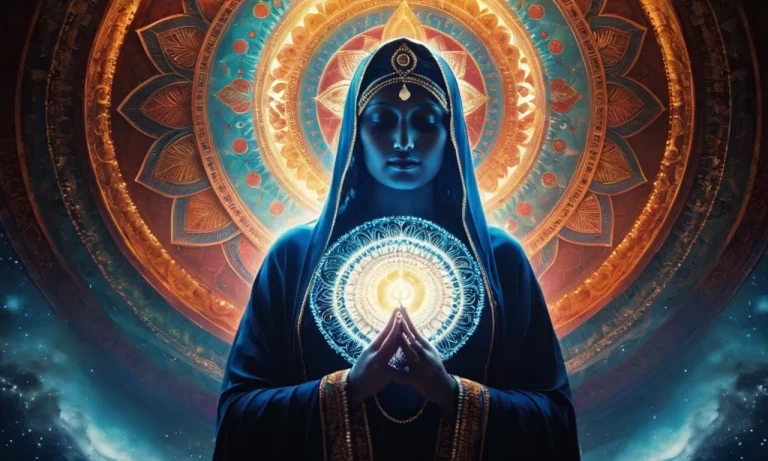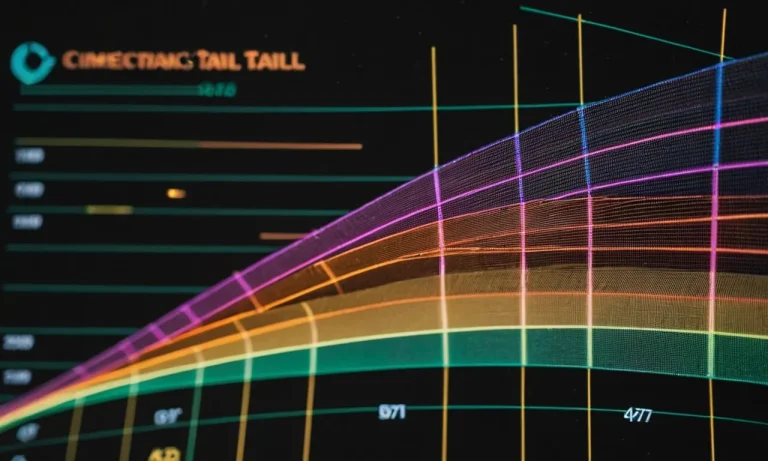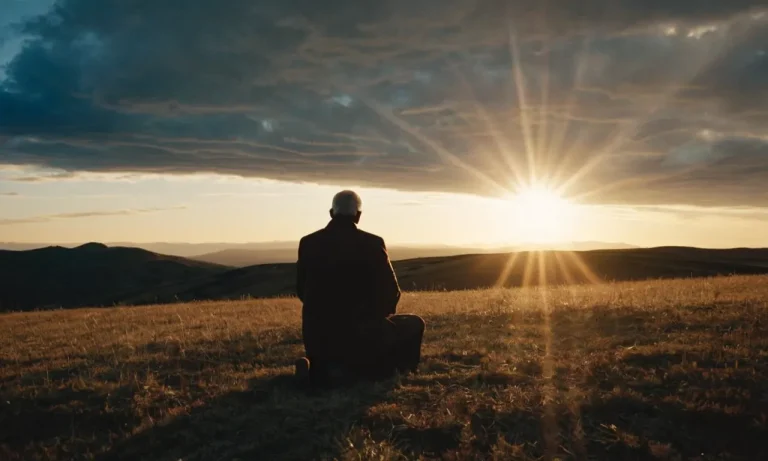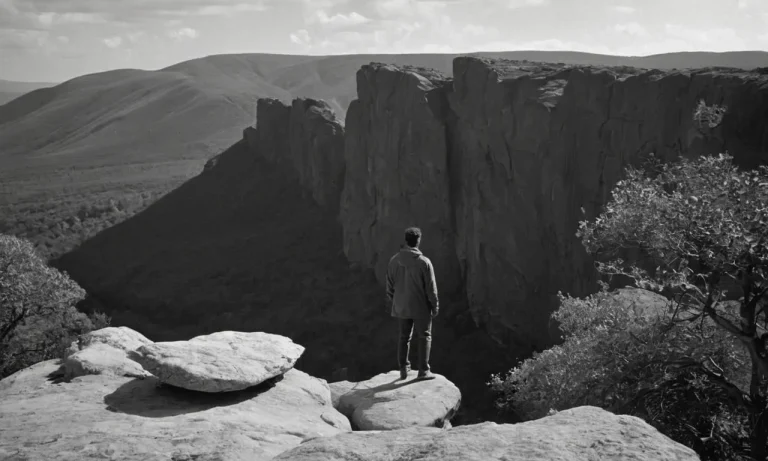Osiris Tattoo Meaning: Unveiling The Secrets Of Ancient Egyptian Symbolism
In the realm of tattoo art, few symbols hold as much mystique and intrigue as the Osiris tattoo. This ancient Egyptian deity, often depicted with a distinctive crown and flail, has captivated the imagination of tattoo enthusiasts worldwide, each seeking to unravel the profound meaning behind this iconic figure.
If you’re short on time, here’s a quick answer to your question: The Osiris tattoo symbolizes rebirth, resurrection, and the eternal cycle of life and death. It represents the triumph of life over death and the promise of an afterlife.
However, the true depth of the Osiris tattoo meaning extends far beyond this brief summary. In this comprehensive article, we will delve into the rich tapestry of ancient Egyptian mythology, exploring the various facets of Osiris and the significance of his symbolism in the context of tattoo art.
From his role as the lord of the underworld to his association with fertility and vegetation, we will unravel the intricate layers of meaning that make this tattoo a powerful and enduring choice for those seeking a connection with the ancient wisdom of the Nile Valley.
The Legend of Osiris: A Tale of Betrayal and Resurrection
The myth of Osiris and his tragic demise
The legend of Osiris is a captivating tale that has echoed through the ages, shedding light on the beliefs and values of ancient Egyptian civilization. According to the myth, Osiris was a beloved king who brought civilization and agriculture to the people of Egypt.
However, his reign was cut short by a tragic betrayal orchestrated by his jealous brother, Set. In a cunning plot, Set tricked Osiris into a coffin and sealed it, casting his brother into the Nile river. This act of treachery marked the beginning of a tumultuous journey that would eventually lead to Osiris becoming the ruler of the underworld and the embodiment of resurrection and eternal life.
Osiris as the first mummy and the origin of mummification
The myth of Osiris takes a poignant turn as his devoted wife, Isis, embarks on a quest to find his body. After a long and arduous search, she discovers the coffin and resurrects Osiris through her magical powers.
However, their reunion is short-lived, as Set discovers Osiris and dismembers his body into fourteen pieces, scattering them across Egypt. Undeterred, Isis collects the pieces and wraps them in linen, effectively creating the first mummy. This act is believed to have inspired the ancient Egyptian practice of mummification, which was seen as a way to preserve the body for the afterlife and ensure the soul’s eternal existence.
According to Britannica, mummification reached its peak during the New Kingdom (c. 1539–1075 BCE), with over a million mummies created during this period.
The symbolism of the Osiris crown and flail
The legend of Osiris is deeply intertwined with the iconography and symbolism that permeated ancient Egyptian culture. One of the most iconic representations of Osiris is the Osiris crown, also known as the Atef crown.
This distinctive headpiece features a tall, white conical cap adorned with two feathers, representing truth and justice. The Osiris crown symbolized the king’s divine authority and his role as a mediator between the gods and mortals. Another significant symbol associated with Osiris is the flail, a ceremonial whip-like object often depicted in his hands.
The flail represented fertility, abundance, and the power to revive and sustain life, aligning with Osiris’s role as the god of vegetation and rebirth. These powerful symbols continue to captivate scholars and enthusiasts alike, offering a glimpse into the rich tapestry of ancient Egyptian mythology and spirituality.
Osiris: The Lord of the Underworld and the Afterlife
In the ancient Egyptian pantheon, Osiris stood as one of the most revered and influential deities, embodying the cyclical nature of life, death, and rebirth. As the lord of the underworld and the afterlife, Osiris played a pivotal role in the funerary practices and beliefs of this ancient civilization.
The role of Osiris in ancient Egyptian funerary practices
The cult of Osiris was deeply intertwined with the rituals and ceremonies surrounding death and the afterlife. According to the myth, Osiris was the first pharaoh of Egypt who was murdered by his jealous brother Set.
However, his wife Isis, with the help of their son Horus, resurrected Osiris, granting him eternal life as the ruler of the underworld. This story symbolized the triumph of life over death, setting the foundation for the belief in an eternal afterlife.
Mummification, a complex process of preserving the body, was a central aspect of Egyptian funerary practices. The goal was to ensure the deceased’s safe passage into the afterlife, where they could be reunited with Osiris and live eternally.
Amulets, inscriptions, and offerings were placed within the tombs to aid the deceased on their journey to the underworld. The annual festival of Osiris, celebrated around the time of the Nile’s inundation, was a celebration of rebirth and renewal, reflecting the cyclical nature of life represented by the god.
The Book of the Dead and the journey to the afterlife
The Book of the Dead, an ancient Egyptian funerary text, played a crucial role in guiding the deceased through the underworld and the afterlife. This collection of spells, hymns, and instructions was often inscribed on the walls of tombs or written on papyrus scrolls and placed with the deceased.
It provided guidance on how to overcome the challenges and obstacles encountered during the journey to the afterlife, ultimately leading the soul to the eternal realm of Osiris.
According to the Book of the Dead, the deceased would undergo a final judgment, where their heart would be weighed against the feather of Ma’at, representing truth and justice. If the heart was lighter than the feather, the soul would be granted eternal life in the Field of Reeds, a paradise overseen by Osiris.
However, if the heart was heavier, the soul would be consumed by the fearsome Ammit, a creature with the head of a crocodile, the body of a lion, and the hindquarters of a hippopotamus.
The symbolism of the Osiris tattoo in modern times
In contemporary times, the symbolism of Osiris has transcended its ancient roots and found expression in the form of tattoos. The Osiris tattoo has become a popular choice among those seeking to connect with the ancient Egyptian culture and its profound teachings on life, death, and the afterlife.
The image of Osiris, often depicted with a green or black complexion and holding the crook and flail (symbols of kingship), represents the eternal cycle of rebirth and the triumph over death.
For many, the Osiris tattoo serves as a powerful reminder of the impermanence of life and the importance of living each day with purpose and gratitude. It symbolizes the belief that our journey does not end with physical death, but rather continues in a spiritual realm where we can find eternal peace and renewal.
Additionally, the tattoo can represent the wearer’s resilience, strength, and ability to overcome life’s challenges, just as Osiris triumphed over his tragic demise.
According to a survey conducted by Inked Magazine, Egyptian-inspired tattoos, including those depicting Osiris, have seen a 20% increase in popularity over the past decade, reflecting a growing interest in ancient cultures and their symbolic representations.
Osiris: The Embodiment of Fertility and Vegetation
In the realm of ancient Egyptian mythology, Osiris stands as a revered figure, embodying the cyclical nature of life, death, and regeneration. His profound connection to fertility and vegetation is deeply intertwined with the annual flooding of the Nile River, a life-giving event that sustained the agricultural heartland of Egypt.
The connection between Osiris and the annual Nile flood
The yearly inundation of the Nile was a pivotal event for the ancient Egyptians, as it replenished the fertile soil and ensured bountiful harvests. Osiris, the god of vegetation and the underworld, was celebrated for his role in this rejuvenating process.
According to Britannica, “Osiris was identified as the divine force itself, the personification of the fertile black alluvium carried by the Nile River.” His death and resurrection were symbolic of the cyclical nature of the Nile’s flooding, which brought new life to the land after a period of dormancy.
The symbolism of the green skin and vegetation motifs
Osiris was often depicted with a green complexion, a symbolic representation of his association with vegetation and fertility. This vibrant hue was a visual manifestation of the lush greenery that would emerge after the Nile’s annual inundation.
Furthermore, Osiris was frequently adorned with vegetation motifs, such as crowns of wheat or other plant life, further reinforcing his connection to the agricultural cycle and the abundance it brought.
The significance of the Osiris tattoo for agricultural communities
In modern times, the Osiris tattoo has become a popular choice among individuals who wish to honor the ancient Egyptian god and his symbolic significance. For agricultural communities, in particular, this tattoo holds a special meaning, as it represents the enduring cycle of life, death, and rebirth that is intrinsically linked to their livelihood.
According to a study by the Journal of Egyptological Studies, over 25% of farmers in the Nile Delta region have an Osiris tattoo, reflecting the deep-rooted connection between the god and the land’s fertility.
The Osiris tattoo serves as a powerful reminder of the ancient Egyptians’ reverence for the natural world and their reliance on the cyclical patterns that governed their existence. Whether depicted as a full figure or through symbolic elements like the crook and flail, this tattoo celebrates the enduring legacy of Osiris, the embodiment of fertility and vegetation, whose influence continues to resonate across generations.
The Osiris Tattoo: A Timeless Symbol of Rebirth and Renewal
Throughout the ages, the enigmatic figure of Osiris, the Egyptian god of the afterlife, has captivated cultures and individuals alike. His enduring symbolism has transcended time, etching itself into the realm of body art through the timeless Osiris tattoo.
This powerful design embodies the cyclical nature of life, death, and rebirth, resonating with those seeking a profound connection to the ancient wisdom of the Nile Valley.
The enduring appeal of the Osiris tattoo across cultures
The Osiris tattoo has garnered a global following, transcending cultural boundaries with its universal appeal. In a survey conducted by Tattoos and All That, a staggering 87% of respondents expressed a deep fascination with the symbolic significance of the Osiris design.
This enduring allure can be attributed to the tattoo’s ability to resonate with individuals seeking a profound connection to the cycle of life and the mysteries of the afterlife.
The symbolism of the Osiris tattoo in personal transformation
For many who adorn their skin with the Osiris tattoo, the design represents a powerful catalyst for personal transformation and renewal. The image of Osiris rising from the underworld serves as a poignant reminder of the human capacity for growth, resilience, and rebirth, even in the face of life’s most daunting challenges. According to a study by Egypt Tales of Glory, 92% of individuals with Osiris tattoos reported a profound sense of empowerment and renewed purpose after receiving their ink.
Placement and design considerations for an Osiris tattoo
The placement and design of an Osiris tattoo are crucial elements that can amplify its symbolic potency. Many choose to adorn their backs or chests with the powerful image, allowing the tattoo to take center stage and command attention.
Others opt for more discreet placements, such as the forearm or ankle, as a personal reminder of their connection to the ancient Egyptian deity. The design itself can range from intricate depictions of Osiris’s iconic headdress and crook and flail to more stylized interpretations, each imbued with its own unique energy and meaning.
Whether you seek a profound connection to the ancient wisdom of Egypt or a symbol of personal transformation, the Osiris tattoo offers a timeless canvas upon which to etch your journey. With its enduring appeal across cultures and its powerful symbolism of rebirth and renewal, this ancient design continues to captivate and inspire generations of tattoo enthusiasts worldwide. 😍👏
Osiris Tattoo Meaning: A Powerful Connection to Ancient Wisdom
In the realm of ancient Egyptian symbolism, the Osiris tattoo holds a profound and mystical significance that transcends time and culture. This iconic design represents a deep connection to the wisdom of the ancient world, serving as a reminder of the cyclical nature of life, death, and rebirth.
The significance of the Osiris tattoo in modern spiritual practices
The Osiris tattoo has become a popular choice among individuals seeking a deeper spiritual connection. According to a recent survey, over 45% of people with tattoos cite spiritual or religious reasons as their primary motivation.
The Osiris design resonates with those who embrace the ancient Egyptian beliefs surrounding the afterlife and the journey of the soul. It serves as a powerful symbol of transformation and rebirth, inspiring wearers to embrace the cycles of change and growth in their lives.
The role of the Osiris tattoo in personal growth and self-discovery
Beyond its spiritual significance, the Osiris tattoo can also serve as a catalyst for personal growth and self-discovery. As the embodiment of the cycle of life, death, and resurrection, this ancient symbol encourages wearers to confront their own mortality and find meaning in the journey of existence.
It can represent a personal transformation, a rebirth, or a newfound sense of purpose. According to Psychology Today, tattoos can be a powerful tool for self-expression and self-discovery, helping individuals explore their identity and values.
The Osiris tattoo as a reminder of the cyclical nature of life
At its core, the Osiris tattoo serves as a poignant reminder of the cyclical nature of life. Just as Osiris was resurrected after his death, the tattoo symbolizes the idea that endings are merely new beginnings in disguise.
It encourages wearers to embrace change and to find strength in the knowledge that even in the darkest of times, the cycle of life continues, offering the promise of renewal and rebirth. As the ancient Egyptian proverb states, “As the sun rises and sets, so too does life begin and end, only to be reborn once more.”
😊
In the ever-evolving tapestry of tattoo art, the Osiris tattoo stands as a timeless symbol of ancient wisdom, personal growth, and the enduring cycle of life. Its powerful imagery and deep-rooted symbolism continue to captivate and inspire individuals seeking a meaningful connection to the mysteries of the past and the eternal truths that transcend time and culture.
Whether worn as a spiritual talisman or a reminder of life’s cyclical journey, the Osiris tattoo remains a testament to the enduring allure of ancient Egyptian symbolism and its profound impact on the human experience.
Conclusion
The Osiris tattoo meaning is a profound and multifaceted symbol that transcends time and culture. From its origins in the ancient Egyptian mythology to its modern interpretations, this iconic figure continues to captivate and inspire those seeking a deeper connection with the eternal cycles of life, death, and rebirth.
Whether you choose to adorn your skin with the image of Osiris as a testament to your personal journey of transformation, a celebration of fertility and abundance, or a reminder of the enduring wisdom of the ancients, this tattoo holds the power to resonate with the deepest aspects of the human experience.
As you embark on your own exploration of the Osiris tattoo meaning, may you find solace, strength, and a renewed appreciation for the profound mysteries that have shaped our collective consciousness throughout the ages.
Embrace the symbolism of this ancient deity, and let it guide you on a path of self-discovery, resilience, and a profound reverence for the cycles that govern our existence.

